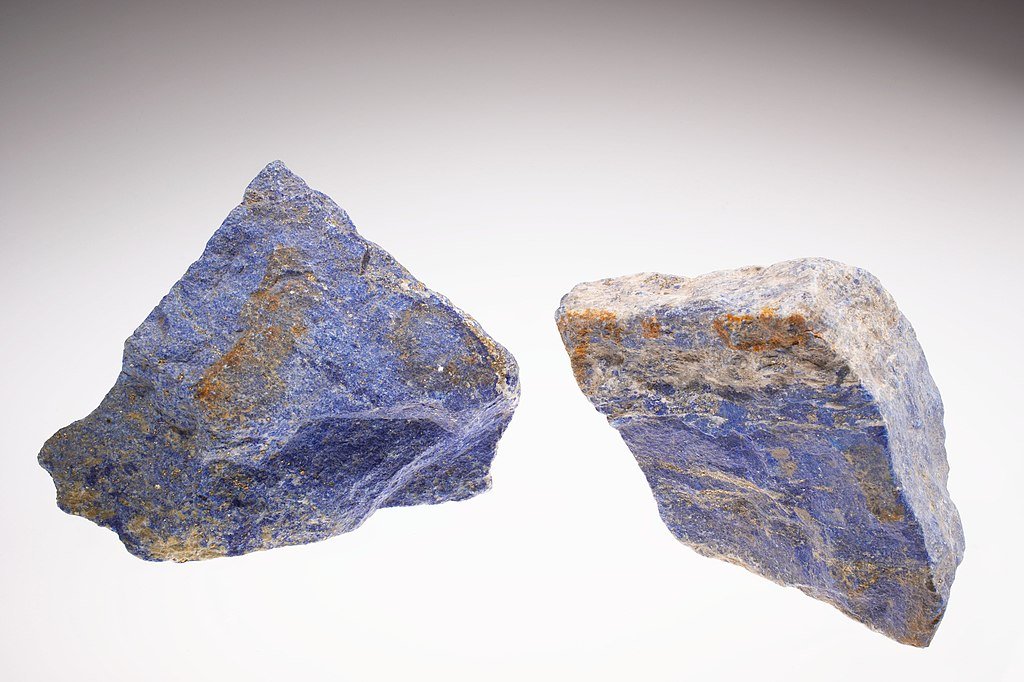Modern researchers have only recently started to piece together the vivid blue adorning ancient Egyptian tombs, sculptures, and jewelry over millennia. Originally created about 3100 BCE and lost to time by the Renaissance, this pigment known as Egyptian blue is the first synthetic color used in humans Now, a group of Washington State University researchers have not only rebuilt it using antiquated techniques but also discovered startling secrets that could transform contemporary technology from biomedical imaging to counterfeit-proof money.
The Lost Art of Egyptian Blue: A Pigment Worth More Than Gold

Egyptian blue was a technical wonder of its day, not only a color. Designed to replace rare minerals like lapis lazuli ( imported from Afghanistan) and turquoise, this pigment graced everything from royal sarcophagi to temple murals. Still, even with its extensive use, the precise formula disappeared from history following the fall of Rome.
What distinguished Egyptian blue so much? Unlike natural colors, it was created by precisely mixing silica, copper, calcium, and an alkali flux, probably natron, the same salt used in mummification at scorching temperatures of 1,000°C (1,832°F). As such, An ancient form of materials science that modern researchers are only now decoding is a brilliant blue that could change to green or gray depending on minute differences in ingredients and cooling techniques.
The Science of Resurrecting an Ancient Color

Led by materials engineer and anthropologist John McCloy, the team at Washington State University embarked on a mission to reverse-engineer Egyptian blue. Using 12 different recipes each tweaking heating times (1 to 11 hours) and cooling rates they discovered that the pigment’s brilliance depended on a surprising factor: slow cooling.
Buried in sand or ash to retain heat, the slow-cooled samples developed up to 70% more cuprorivaite, the crystal responsible for the signature blue hue. Rapid cooling, by contrast, left the pigment dull and glassy. Even more astonishing? The deepest blues required only 50% cuprorivaite, the rest was a mix of silica, copper oxides, and even trace minerals, proving ancient artisans didn’t need purity to achieve vibrancy.
Infrared Secrets: The Hidden Power of Egyptian Blue
Beyond appearances, Egyptian blue has a futuristic secret: it glows in the dark sort of. The pigment emits near-infrared radiation when exposed to visible light; this invisible to the human eye but detectable with modern sensors. Unknown to its builders, this quality has amazing ramifications:
- Art Restoration: Conservators can now spot hidden layers of Egyptian blue beneath centuries of paint or grime by scanning for infrared luminescence.
- Security Tech: The pigment could be used in tamper-proof inks for passports or banknotes, as its infrared signature is nearly impossible to replicate.
- Medical Imaging: Its unique light emission might aid in non-invasive biomedical diagnostics.
“The ancient Egyptians had no idea they’d created something with these properties,” McCloy admits. “It’s like finding a smartphone in a pharaoh’s tomb”.
From Temples to Telecommunications: A Modern Revival

The crystal structure of Egyptian blue is remarkably similar to those of materials used in high-temperature superconductors that could transform energy flow. Investigating its copper-silicate structure could reveal hints for next-generation materials, according to scientists.
Museums are already profiting in the meantime. Now on show at the Carnegie Museum of Natural History, the reconstructed pigment enables conservators to authenticate objects and even replicate fading colors in historic artworks.
Why Did the Recipe Disappear?
The fall of Egyptian blue still puzzles me. According to some theories, the fall of the Roman Empire upset trade routes for essential components including natron. Others attribute changing artistic tastes or the advent of less expensive substitutes for blame. The recipe was lost by the Renaissance until recently.
A Bridge Between Past and Future

What began as a quest to replicate a museum display has blossomed into a cross-disciplinary marvel, blending archaeology, chemistry, and cutting-edge tech. “This isn’t just about the past,” McCloy reflects. “It’s about how ancient ingenuity can inspire tomorrow’s breakthroughs”.
For those eager to see this living history, the Carnegie Museum’s Egypt on the Nile exhibit, opening in 2026, will showcase the resurrected pigment alongside artifacts it once adorned a full-circle moment for a color that refused to fade into oblivion.
Final Thought
Scientists have not only brought Egyptian blue back to life but also opened a dialogue between civilizations split over millennia. They have not only revived a pigment. Who knows what other hidden in plain sight ancient secrets wait for rediscovery?
Sources:

Suhail Ahmed is a passionate digital professional and nature enthusiast with over 8 years of experience in content strategy, SEO, web development, and digital operations. Alongside his freelance journey, Suhail actively contributes to nature and wildlife platforms like Discover Wildlife, where he channels his curiosity for the planet into engaging, educational storytelling.
With a strong background in managing digital ecosystems — from ecommerce stores and WordPress websites to social media and automation — Suhail merges technical precision with creative insight. His content reflects a rare balance: SEO-friendly yet deeply human, data-informed yet emotionally resonant.
Driven by a love for discovery and storytelling, Suhail believes in using digital platforms to amplify causes that matter — especially those protecting Earth’s biodiversity and inspiring sustainable living. Whether he’s managing online projects or crafting wildlife content, his goal remains the same: to inform, inspire, and leave a positive digital footprint.




